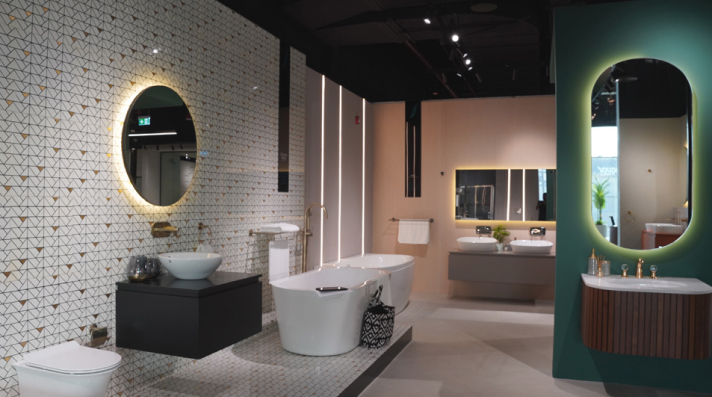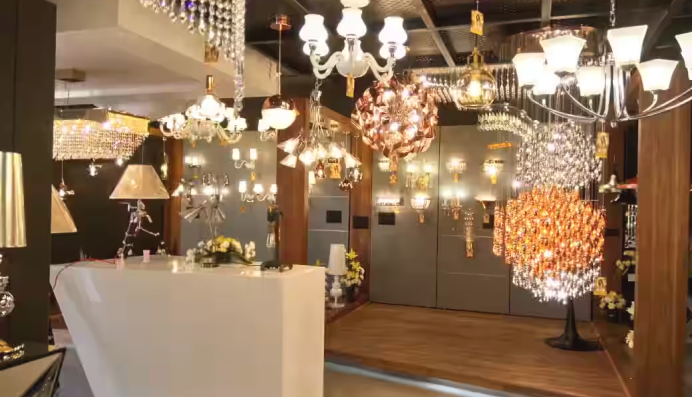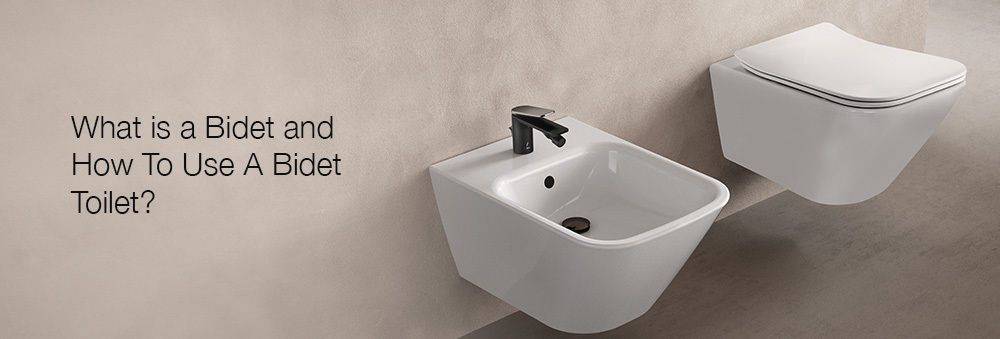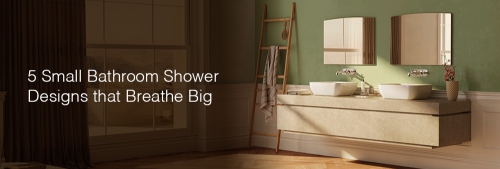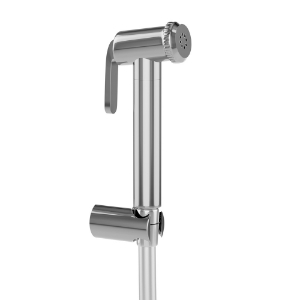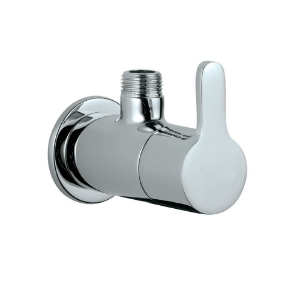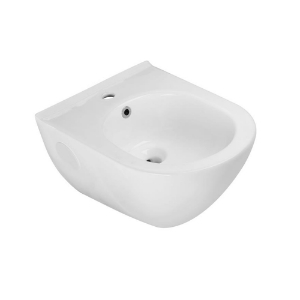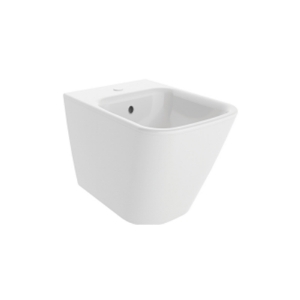Have you ever wondered what a bidet is and how a bidet toilet works? Perhaps you've encountered bidets or seen them in high-end hotels during your travels. Bidets are becoming increasingly popular due to their hygienic benefits and environmental friendliness. This blog post will explore everything you need to know about bidets, including what a bidet is used for, how to use a bidet toilet, and the potential benefits of installing one in your bathroom, focusing on the premium bidet toilet offerings from Jaquar, a global leader in bathware and lighting solutions.
What is a Bidet, and What is it Used For?
A bidet is a sanitary fixture specifically designed for personal hygiene after using the toilet. They typically resemble a low basin or a toilet with a built-in faucet and nozzle that sprays warm or cold water for cleaning. Bidets can be standalone units installed next to your toilet or integrated into the toilet seat itself, known as a bidet toilet. While toilet paper is still commonly used for drying after using a bidet, many users find bidets offer a more thorough and refreshing clean.
How To Use a Bidet Toilet Correctly?
Here's a step-by-step guide to help you make the most of your bidet experience:
Step 1: Use the Toilet
Start by using the toilet as usual. After finishing your business, wipe with toilet paper to remove any excess waste. This initial step helps prevent any debris from getting on the bidet nozzle when you activate it.Step 2: Adjust the Settings
Before using the bidet, take a moment to adjust the settings according to your preferences. Most bidet toilets, including Jaquar models, come with a control panel that allows you to modify water temperature, spray pressure, and nozzle position. Some models have remote controls, while others feature intuitive touch panels.- Water Pressure: Choose a gentle or stronger spray based on your comfort level.
- Temperature: Adjust the water temperature to suit your needs—warm water is especially soothing.
- Nozzle Position: Ensure the nozzle is correctly positioned for optimal cleaning. Most bidets allow you to move the nozzle forward or backwards.
Step 3: Activate the Bidet Spray
Once you're seated and the settings are adjusted, activate the bidet's spray function. Depending on the model, you can do this by pressing a button, using a lever, or tapping the control panel. The bidet will begin spraying water to clean the genital and anal areas.Step 4: Cleanse and Adjust
As the water flows, you may need to adjust the nozzle's angle to ensure you're getting a thorough cleanse. You can also modify the water pressure and temperature for more comfort. Spend a few seconds ensuring that you're cleaned properly.Step 5: Dry Off
After the cleaning process, you can use toilet paper, a dedicated bidet towel, or a built-in air dryer to dry off. Many modern bidet toilets come with a warm air dryer, allowing you to dry without any paper.Step 6: Clean the Bidet
After use, rinse the bidet basin with clean water. Some bidet toilets come with self-cleaning features, but it's still a good idea to clean the nozzle and basin manually from time to time to maintain hygiene.Step 7: Wash Your Hands
As always, make sure to wash your hands thoroughly with soap and water after using the toilet and bidet to maintain proper hygiene.
By following these simple steps, you can enjoy a more hygienic, comfortable, and environmentally friendly bathroom experience with a bidet toilet.
Types of Bidets
Bidets come in several variations, each designed to cater to different needs and preferences.
- Standalone Bidet: The standalone bidet is a separate plumbing fixture which resembles a small sink with a nozzle or faucet for spraying water. To use it, you must sit on it facing the faucet or in the reverse position, depending on the nozzle's location.
- Floor-Mounted Bidet: A floor-mounted bidet is installed on the floor, similar to a standard toilet. It is connected to the plumbing system at the floor level and often features a curved design with a faucet or nozzle for water spraying.
- Wall-Hung Bidet: Wall-hung bidets are mounted on the wall, giving them a sleek and modern appearance. They are suspended above the floor and typically have no visible plumbing, creating a clean and minimalist look.
- Integrated Bidet Toilet: An integrated bidet toilet is a unit that combines both the toilet and bidet functions into one piece of equipment. These come with multiple spray settings, automatic seat opening/closing, and self-cleaning nozzles.
Benefits of Bidet Toilets
There are several potential benefits to installing a bidet toilet in your bathroom:
- Improved Hygiene: Bidets offer a more thorough clean compared to toilet paper alone, potentially reducing the risk of infections and irritation, especially for individuals with haemorrhoids or other sensitivities.
- Increased Comfort: The warm water spray from a bidet is generally considered more comfortable and refreshing than using toilet paper.
- Environmental Friendliness: Bidets can significantly reduce toilet paper usage, making them an eco-friendly bathroom addition.
- Enhanced Personal Hygiene: Bidets can be particularly beneficial for women during menstruation and for individuals with limited mobility.
Conclusion:
Bidet toilets offer a hygienic and refreshing alternative to traditional toilet paper use. They can improve personal hygiene and comfort and potentially reduce your environmental impact. If you're considering adding a bidet toilet to your bathroom, Jaquar is a brand worth exploring. Their bidet toilets are known for their quality, design, functionality, and water efficiency. Jaquar bidet toilets come with a warranty of up to 10 years, giving you peace of mind for years. With a bidet toilet from Jaquar, you can experience a whole new level of bathroom luxury and hygiene.
FAQs:
Q. Are bidets common Worldwide?
A. Bidet toilets are common in some Asian, Middle East and European countries. Growing awareness of their hygienic benefits and growing disposable incomes are contributing factors.
Q. Do Bidet Toilets Require Special Plumbing or Electrical Connections?
A. Most bidet toilets require a standard water supply connection and an electrical outlet for the heated water function and bidet controls. If you are considering a bidet toilet installation, consulting with a licensed plumber is recommended to ensure proper compatibility with your existing plumbing.
Q. What are the Environmental Benefits of Using a Bidet Toilet?
A. Bidet toilets can significantly reduce toilet paper usage. Toilet paper production requires a large amount of trees and water. Using less toilet paper and bidet toilets can contribute to a more sustainable bathroom routine. Jaquar prioritises eco-friendly practices throughout our product development, and our bidet toilets are designed for water efficiency.
Q. Do Bidet Toilets Require Any Special Hygiene Practices After Use?
A. After each use, it's recommended to briefly rinse the bidet basin with clean water. Some Jaquar bidet toilets may have a self-cleaning function. Always refer to the manufacturer's instructions for properly cleaning and maintaining your bidet toilet.
Q. Can Bidets Help Conserve Water?
A. While bidets use water, studies suggest they can use less water than what is typically required to sufficiently clean oneself with toilet paper alone. Additionally, many bidet toilets, including those offered by Jaquar, offer features like adjustable spray pressure and duration to help conserve water.
Q. Are Bidets Hygienic to Use?
A. Bidets themselves are not inherently unhygienic. However, proper cleaning and maintenance are essential. Bidet users should avoid sharing bidet towels and ensure the bidet basin is rinsed after each use. Jaquar bidet toilets feature high-quality materials with smooth, easy-to-clean surfaces that help prevent bacteria buildup.
#Tags
what is a bidet, how to use a bidet, what is a bidet used for, what is a bidet toilet, bidet toilet how to use, how do you use a bidet, how to properly use a bidet
Explore Our Bathroom Categories:

